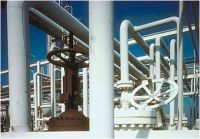SERECARB - LCA on Recovery of Calcium Carbonate in paper making effluents
Project goals
- Assessing the technical feasibility of a new low temperature process for selective recovery of calcium carbonate in deinking sludge or primary sludge of paper mills using this filler – The aimed end-product is high value-added precipitated calcium carbonate (PCC)
- Assessing process conditions controlling the end-product quality – The PCC can either be used on site or sold.
- Assessing the economical interest and environmental benefit by Life Cycle Analysis, technico-economic and market surveys
Summary
The paper industry is confronted with huge amounts of sludge, millions of tonnes worldwide, which has to be eliminated, one way or another. The sludge contains a high amount of water, up to 40 % and a fair proportion of minerals, around two thirds of dry content, half of it being calcium carbonate. In many cases, this sludge is dumped or land-filled for soil improvement, but this solution is costly and limited by legal restrictions. Other solutions, aiming at partial or total recovery of minerals or conversion to valuable products, require transportation of sludge over long distances and complex thermal or chemical treatments. In thermal treatments, energy may be gained by oxidation of organic material in the sludge, but an important share is lost in drying the substances prior to incineration.
Main sources of sludge are deinking mills and mills using calcium carbonate as filler. Deinking mills must on the one hand eliminate sludge containing high amounts of calcium carbonate and on the other hand purchase pure calcium carbonate as filler for paper production. The highest quality and most expensive grade on the market is precipitated calcium carbonate – PCC.
A selective recovery of calcium carbonate and conversion to PCC permitting on-site reuse would have several advantages:
- To reduce the amount of sludge to transport and dispose of,
- To save expenses for the purchase of fresh carbonate and avoid the corresponding expenditure and transport
- To up-grade carbonate present in sludge to high value-added PCC


